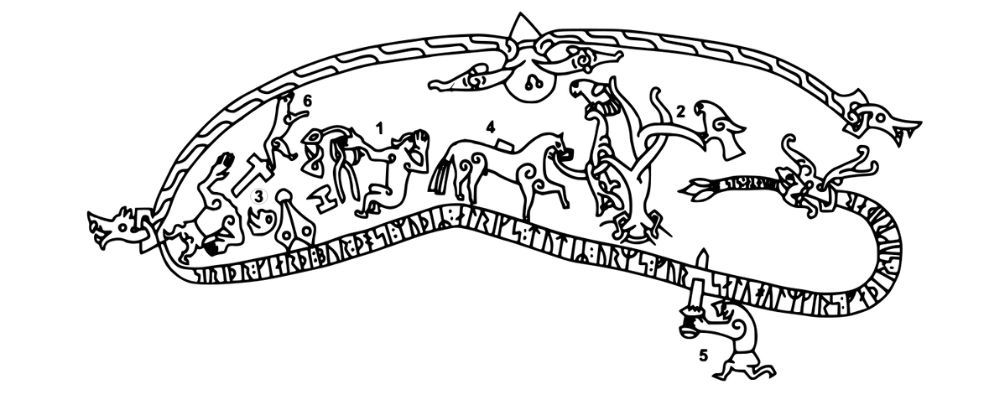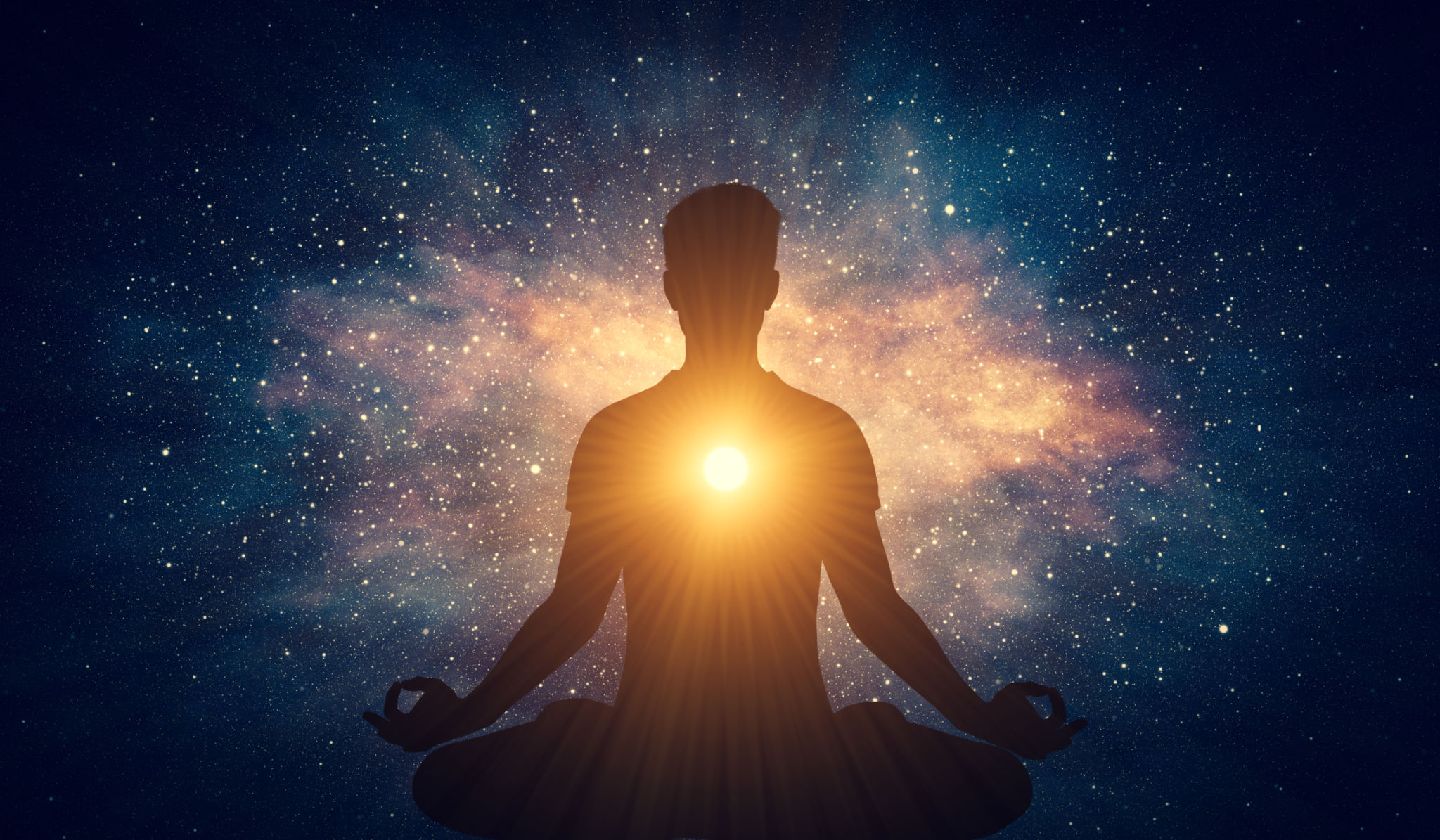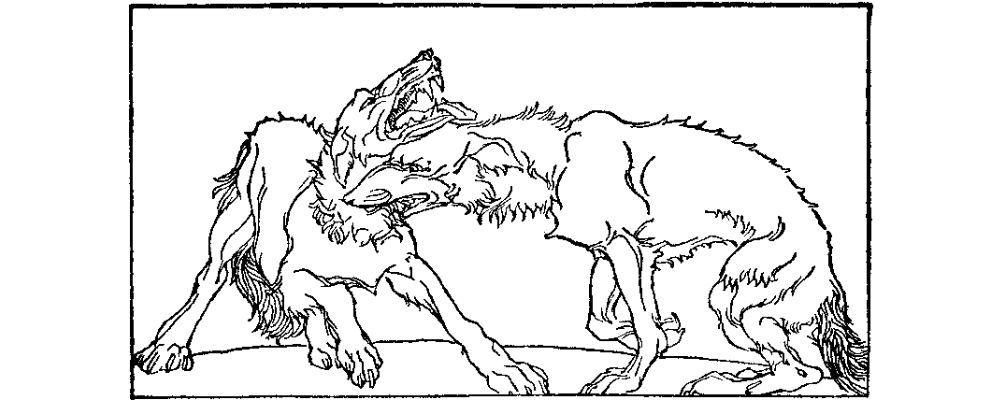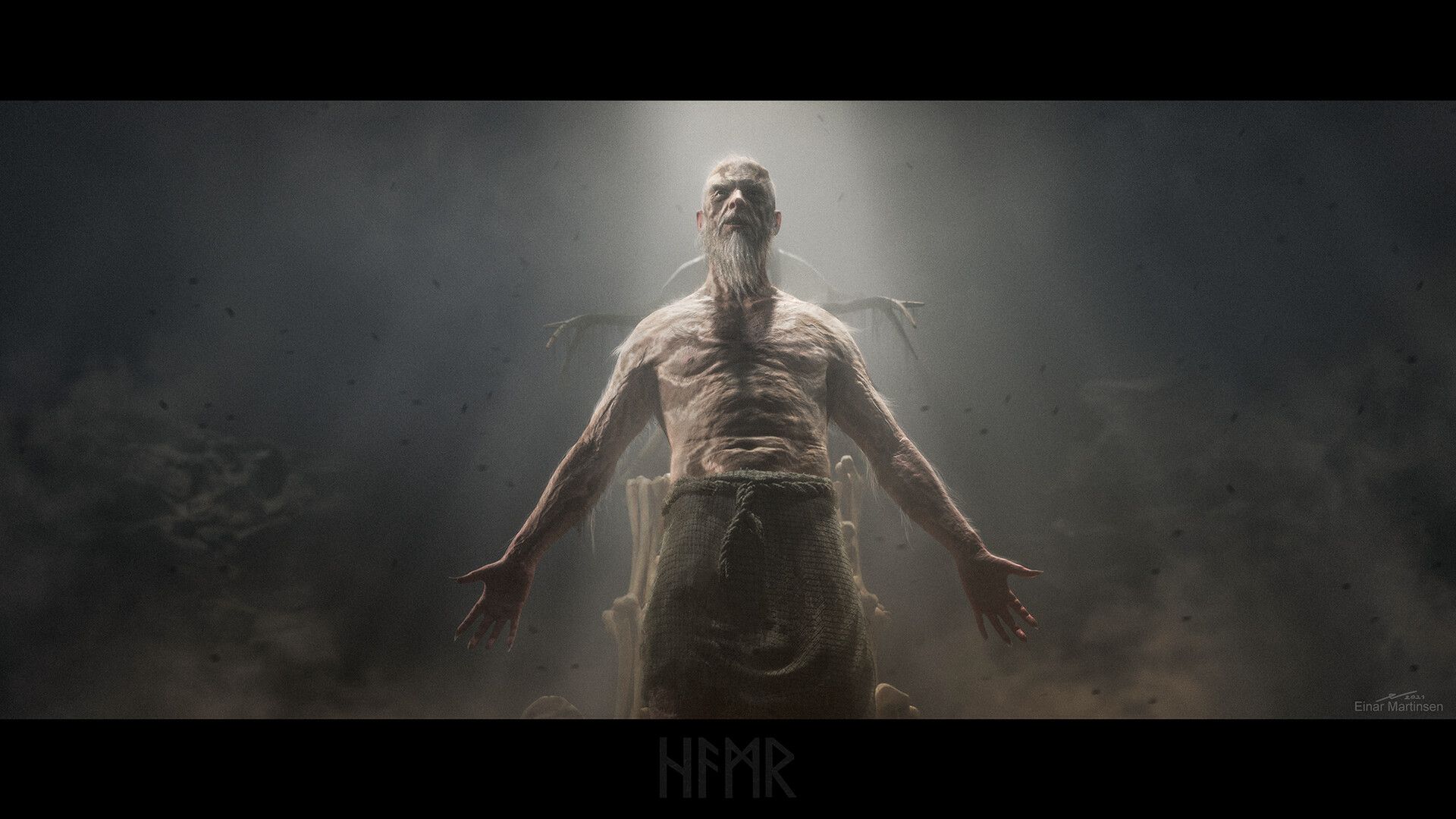The Hamr and the Hugr: Shape and Mind in the Old Norse Soul
When we study the old ways of our Northern ancestors, we quickly realize something: they didn’t think of the soul as one simple thing. The self... what made a person who they were... was a weave of multiple parts, each with its own purpose, power, and destiny.
Two of these aspects, the hamr and the hugr, show us how the Norse people understood the connection between body, mind, and spirit. Together, they form the bridge between the visible self and the unseen world: the form and the will of one’s being.

Hamr: The Shape That Defines You
In Old Norse, hamr literally means “shape” or “skin.” At first glance, it might sound like just the outer body. But in Norse cosmology, it’s much more than flesh. The hamr is the spiritual shape - the form that holds your essence. It’s the vessel through which your inner power moves, and it can change.
To “change one’s hamr,” or skipta hömum, meant to shape-shift, to alter the appearance of one’s spirit — sometimes physically, sometimes in dreams, and sometimes through magic.
Hamr in the Sagas
The sagas are filled with accounts of men and women who could alter or send forth their hamr:
- In Hrólfs saga kraka, Böðvarr Bjarki’s spirit manifests as a great bear fighting in his stead — his hamr acting separately from his body.
- In Eyrbyggja saga, a woman named Katla sends her hamr to deceive and mislead pursuers, while her physical body remains hidden at home.
- Even Odin himself is said to travel hamförum — “in the form of another shape” — sending his hamr through the worlds while his body lies as if asleep.
These tales reveal that the hamr wasn’t seen as rigid or fixed. It was an expression of one’s spiritual vitality... the form your soul could take when freed from the bounds of flesh.
The Hamr and the Self
To the Norse mind, hamr defined identity in a way we might call “energetic.” Your hamr reflected your inner state. A strong spirit shone through a strong hamr; a person wracked by guilt, sickness, or dark magic might have a weakened or “twisted” one.
Rudolf Simek describes the hamr as “the shape in which a being reveals itself,” and that “it could be changed or sent forth from the body” (Dictionary of Northern Mythology, 1993).
This explains the many saga scenes where warriors dream of fighting animals that later turn out to represent human foes — they were perceiving the hamr of another, rather than their fleshly form.
So in many ways, the hamr is both your appearance and your aura — the visible and invisible shape of who you are.
Shifting, Sending, and Strengthening the Hamr
The art of changing or sending forth the hamr is sometimes called hamfarir — “shape-journeys.” Those skilled in this art could project their spiritual body to distant places, commune with spirits, or even affect events in the physical world.
But not everyone could do this at will. In some sagas, the ability comes through divine favor or lineage; in others, through magical training (seiðr). Odin, for instance, was said to “fly in the shape of animals, or send his spirit elsewhere” (see Ynglinga saga ch. 7).
Strengthening the hamr, therefore, meant living in alignment with your spiritual power: maintaining health, clarity, and inner balance. When the body, mind, and will were at peace, the hamr was said to “shine” with vitality.
In the modern Heathen worldview, we might say: your hamr is your presence... how your spirit shows up in the world, both seen and unseen.

Hugr: The Thought, the Will, the Inner Self
Where hamr is the shape, hugr is the thought... the will, emotion, and intent that moves within.
The Old Norse word hugr (cognate with Old English hyge) means “mind,” “heart,” or “soul-thought.” It’s the living awareness that bridges consciousness and emotion: not quite intellect, not quite feeling, but both together.
In many sources, the hugr is depicted as mobile - able to leave the body, travel in dreams, or influence others through sheer force of intent.
“Men’s thoughts could travel; they could be sent forth from the body, and even appear to others as visible shapes.”
— H.R. Ellis Davidson, The Road to Hel (1943)
Hugr in the Lore
A few examples show the power and nature of the hugr:
- In Gisli’s Saga, dreams reveal the thoughts (hugr) of enemies, showing their intent before the events unfold.
- In Njáls saga, prophetic dreams are understood as visions of the hugr moving between worlds.
- Odin’s own mastery of magic relies on the ability to control and direct his hugr — his will being strong enough to bend reality itself.
The hugr was not just thought... it was the force behind thought. A person with a powerful hugr could influence events and people simply through intensity of presence or focus.
In that sense, the hugr is the seat of charisma, magic, and mental strength.
Hamr and Hugr: Body and Will, Form and Mind
To truly grasp the Norse view of the self, we have to see hamr and hugr as two halves of a whole.
The hamr is the form your soul wears... both physical and spiritual.
The hugr is the mind and will that animates that form.
In combination, they describe a living, dynamic self: one capable of transformation, magic, and growth.
A strong hugr empowers the hamr, giving it clarity and strength. A wounded or fragmented hugr may lead to sickness, confusion, or loss of shape... what we might call "soul-sickness" today.
And when the hugr is balanced and clear, the hamr shines brightly — the two in harmony, expressing the full power of one’s being.

How the Hamr and Hugr Interact with the Other Soul Parts
Old Norse belief recognized several “soul-parts”: önd (breath, divine spark), líf (life), hamr (shape), hugr (thought/will), fylgja (companion spirit), and hamingja (luck or family fortune).
They’re not separate “souls” so much as overlapping dimensions of being... layers of consciousness, ancestry, and fate.
- The hugr directs thought and intent.
- The hamr manifests that intent in form.
- The hamingja ensures fortune follows righteous action.
- And the fylgja acts as companion and mirror, revealing one’s deeper nature.
Together, they make up a fully realized person: mind, spirit, and body unified in motion.
Strengthening Hamr and Hugr in Modern Practice
For modern Heathens, understanding these ancient ideas can offer guidance on living more fully and consciously. Here are some ways to work with them today... not as superstition, but as living metaphors rooted in ancestral wisdom.
To Strengthen the Hamr
- Care for the body and spirit alike. Diet, rest, exercise, and spiritual hygiene all reinforce the health of your hamr.
- Engage in meditation or “shape” practices: visualization, journeying, or ritual to explore how your inner form feels and shifts.
- Live authentically; deception or self-betrayal warps the hamr, while integrity keeps it strong and bright.
To Cultivate the Hugr
- Train the will through discipline and focus: in crafts, martial arts, study, or magic.
- Speak your intent clearly. Words shape the hugr as runes shape reality.
- Maintain emotional awareness. A turbulent hugr leads to scattered luck; a calm one directs it with purpose.
When hamr and hugr are in harmony, the individual stands as a whole being... mind, body, and spirit aligned. This was the ancient ideal of personal strength and wisdom.
Conclusion
The Norse understanding of the soul was anything but simple. They saw human beings as multi-layered... capable of shifting shape, projecting thought, and influencing fate itself through the power of will.
To live with a strong hamr and a clear hugr is to live intentionally: to let your spiritual shape reflect your truest self, and your thoughts direct your destiny.
As the poet in Hávamál reminds us:
“A man’s mind can be no greater
Than the measure of his understanding.”
In that truth lies the ancient key: guard your thoughts, shape your spirit, and your hamr will shine with the strength of your hugr.

Suggested Reading & Sources
- Ynglinga saga, ch. 7 – Odin’s shape-shifting and “sending forth his spirit.”
- Eyrbyggja saga – the tale of Katla and her deceptive hamr.
- Hrólfs saga kraka – Böðvarr Bjarki’s bear-form and battle-spirit.
- Gisli’s Saga and Njáls Saga – dream-visions and the traveling hugr.
- Rudolf Simek, Dictionary of Northern Mythology (1993).
- H.R. Ellis Davidson, The Road to Hel (1943).
- Neil Price, The Viking Way (2002).
- Andy Orchard, Dictionary of Norse Myth and Legend (1997).